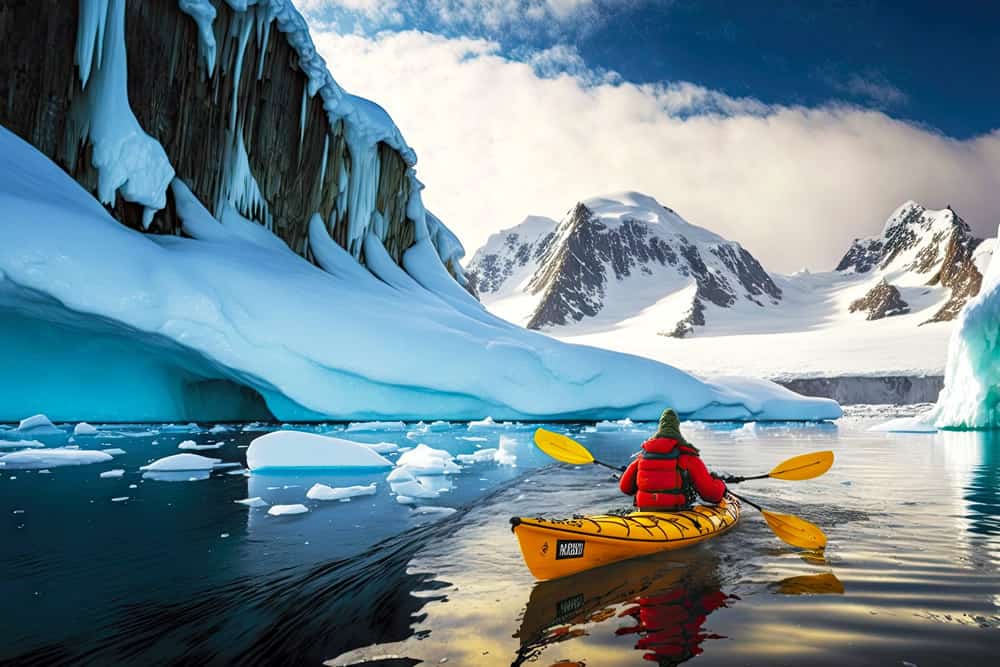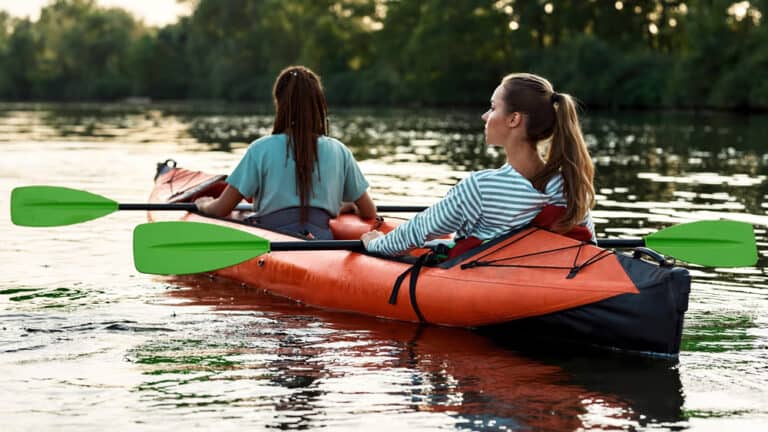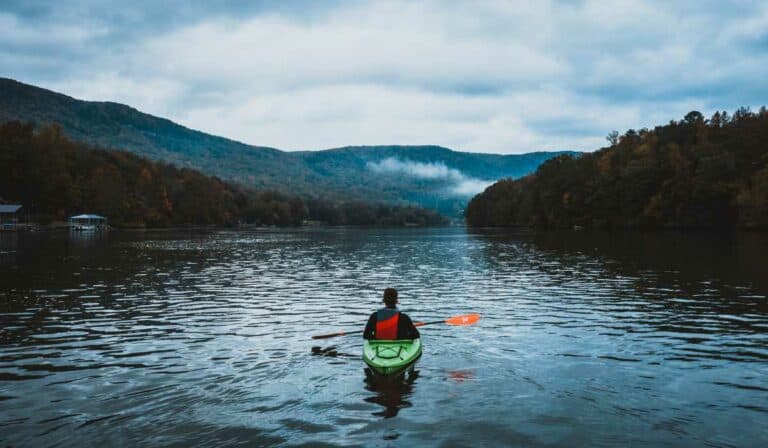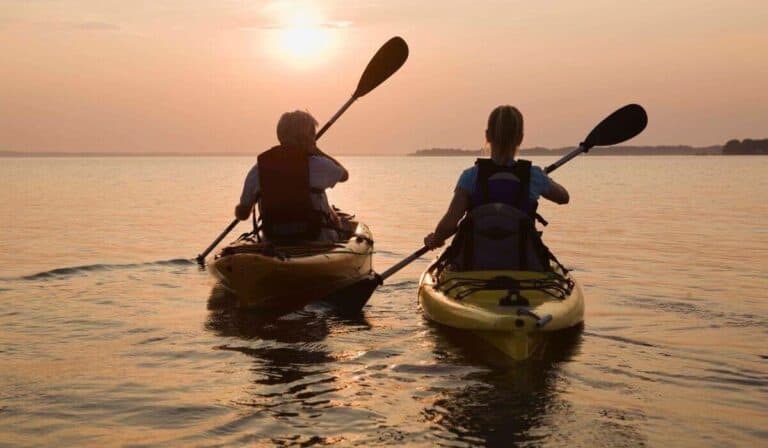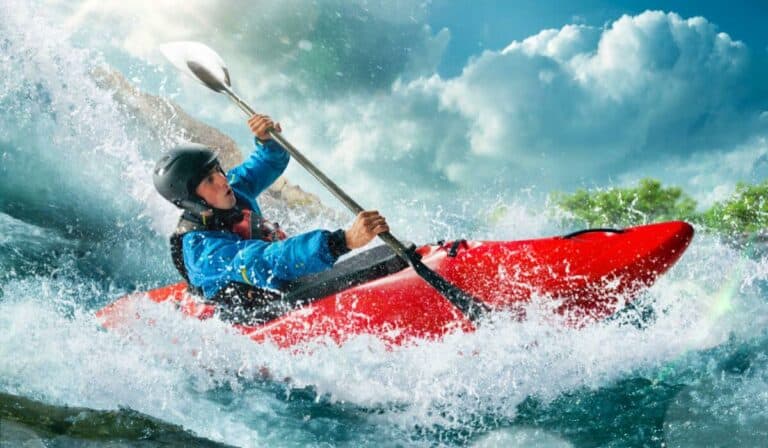Kayaking For Beginners – Everything You NEED To Know
If you’re a beginner kayaker, congratulations on taking the first step towards an exciting new adventure! With kayaking, you can enjoy stunning views and get a good workout while experiencing the great outdoors. In this kayaking for beginners guide, we’ll provide you with essential tips and tricks for your first-time kayaking trip. Whether you’re planning to kayak in calm waters or brave whitewater rapids, we’ve got you covered.
We’ll start by discussing the different types of kayaks available, including sit-in and sit-on-top options as well as single and tandem models. We’ll also cover basic skills such as proper paddle stroke technique and how to use your paddle blades effectively. Safety is always a must when engaging in water activities, so we’ll talk about the importance of having protective gear like PFDs (personal floatation devices) to help keep you safe should anything unexpected occur.

Additionally, we’ll share advice on what essentials to bring along on your kayaking adventure – from waterproof bags for storing valuables to water bottles for staying hydrated during long paddles. If you’re not sure where to begin when it comes to planning your trip or finding suitable locations for recreational paddling, don’t worry – we’ve got suggestions for that too!
By the end, you should be ready to set off on your own or with companions and begin exploring nature by kayaking. So let’s dive right into our beginner’s guide and get started!
Table of Contents:
- Choosing the Right Kayak
- Basic Kayaking Techniques
- Safety Tips for Kayakers
- Essential Gear for Kayaking
- Advanced Kayaking Skills
- FAQs in Relation to Kayaking Guide for Beginners
- Conclusion
Choosing the Right Kayak
When selecting a kayak, certain criteria should be taken into account. When deciding on a kayak, the initial factor to consider is your financial plan. Kayaks can range from relatively inexpensive recreational models up to high-end touring boats that cost thousands of dollars. Think about how much you’re willing to spend and stick with it.
Next, consider what type of water you plan on paddling in: rivers, lakes or both? Kayaks that are tailored for different bodies of water have divergent characteristics; for example, those created for rapids are typically shorter and more responsive than the longer-bodied sea kayaks with better tracking capabilities. Knowing where you plan on paddling will help narrow down your choices significantly.
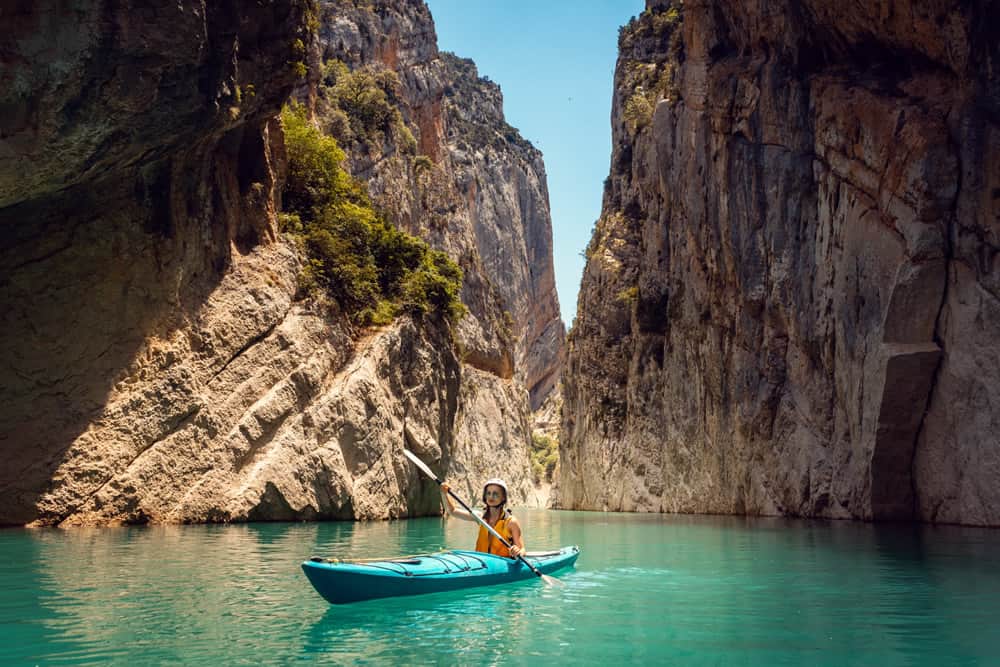
You also need to think about size—not just length but width as well as weight capacity. A wider boat offers more stability while a narrower one provides better speed through the water; however, if the weight capacity is too low for your body type then you may find yourself struggling with balance issues when out on the water.
Finally, don’t forget comfort. Make sure that any potential new purchase fits comfortably in terms of legroom as well as seat height and backrest support—especially if you plan on spending long days out on the lake or river fishing or exploring. It might be worth investing in an adjustable kayak seat so that you can customize it depending upon who’s using it at any given time (or even add extra padding).
Considering the multitude of elements to consider, selecting a kayak should be relatively simple. Do some research beforehand so that once you get into the store (or online) shopping experience, everything else will fall into place quickly without feeling overwhelmed by all those options available.
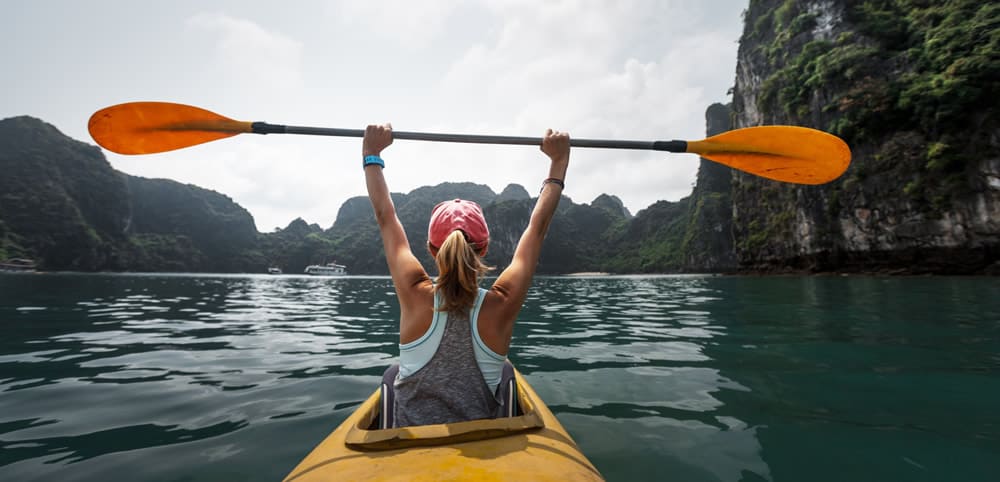
Selecting an appropriate kayak is critical for a rewarding and gratifying time on the water. Having determined the appropriate kayak for your needs, it’s now time to focus on mastering basic kayaking techniques.
Basic Kayaking Techniques
Paddling Basics
Paddling is the foundation of kayaking and mastering basic techniques will help you become a more confident and skilled kayaker. Sit in the boat with your feet firmly on the foot pegs, knees bent, back straight and arms slightly bent at the elbows while gripping the paddle shaft.
To propel yourself forward with each stroke use a “J” or “C” shaped stroke technique; this involves pushing out away from you to start then pulling towards you as if tracing a letter ‘J’ or ‘C’ in the water. Keep your top hand stationary while rotating only your bottom hand when making strokes.
For an extra boost of power add an upper body twist to each stroke. When turning corners use quick angled strokes called sweeps that push against the current while keeping your boat facing forward for maximum efficiency. Finally practice proper paddling etiquette by staying off private property, avoiding shallow areas where aquatic life may be present and respecting other boaters around you on busy waterways.
Reading Water
Always exercise caution when approaching unpredictable features such as eddies, boils, standing waves, hydraulics and holes along river banks; they should be avoided unless you are a skilled navigator.
Maneuvering Rapids
Before attempting any rapid, always scout ahead first looking for possible hazards and assessing what type of route will best suit you and your kayak’s capabilities. When entering a rapid, keep control over your craft using stern draws and low braces to maintain balance; remember that momentum is key so keep up speed throughout turns but don’t forget about safety either. Always wear protective gear including helmets and life jackets no matter how small the rapid may seem.
Practicing the basic kayaking techniques will help ensure a safe and enjoyable experience for all levels of paddlers. In order to maximize safety while out on the water, following the guidelines laid out in the upcoming section is essential.
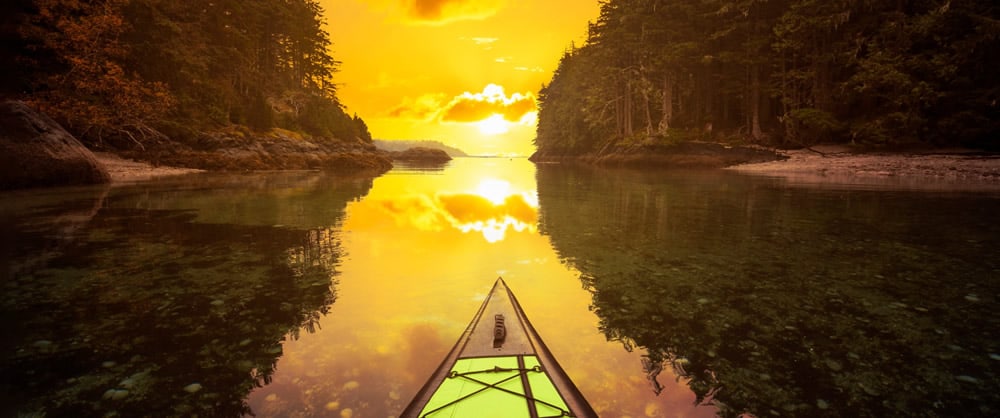
Safety Tips for Kayakers
Kayaking is an enjoyable outdoor activity that can be enjoyed by people of all ages and abilities. However, it’s important to keep safety in mind when out on the water. To ensure a safe and enjoyable experience, kayakers should take certain precautions such as wearing life jackets, avoiding strong currents or rapids, and checking the weather before heading out.
For optimal safety, ensure you are wearing a correctly-fitting life jacket while kayaking. It will help keep you afloat if you capsize or fall into the water unexpectedly. Make sure your life jacket fits properly and check its condition before each use.
Before setting out, ensure you are aware of the weather conditions by consulting forecasts to prepare for any potential hazards. Pay attention to wind speed, temperature, waves and other factors that could affect your journey. If conditions become too dangerous for kayaking, head back ashore as soon as possible for your own safety.
Select a kayak that is suited to your intended paddling activity, as various vessels are made for different purposes. Don’t bite off more than you can chew; stick with what you know and progress slowly with guidance from experienced instructors or guides in controlled environments such as lakes or rivers without rapids or strong currents. Keywords: kayaking, safety tips, life jacket, weather conditions, skill level
Bring necessary supplies to ensure safety and success while kayaking, such as plenty of drinking water and snacks to prevent dehydration in hot weather due to physical exertion combined with direct sunlight. Additionally pack sunscreen, insect repellent (if applicable), extra clothing layers (in case temperatures drop), flares/signal devices like whistles, maps/GPS navigation systems, first aid kits including any medications prescribed by medical professionals if needed, flashlights/headlamps , fire starters / tinder boxes etc., cell phones/radios etc., anchor line & rope for tying up boat at shoreline.
Whenever possible, paddle with others rather than alone because there is strength in numbers. This way, if someone gets into trouble, another person may be able to assist them instead of relying solely upon themselves should an emergency situation arise suddenly without warning and without giving ample time to prepare mentally and physically beforehand. Proactive measures can be taken instead of reactive damage control techniques afterwards.
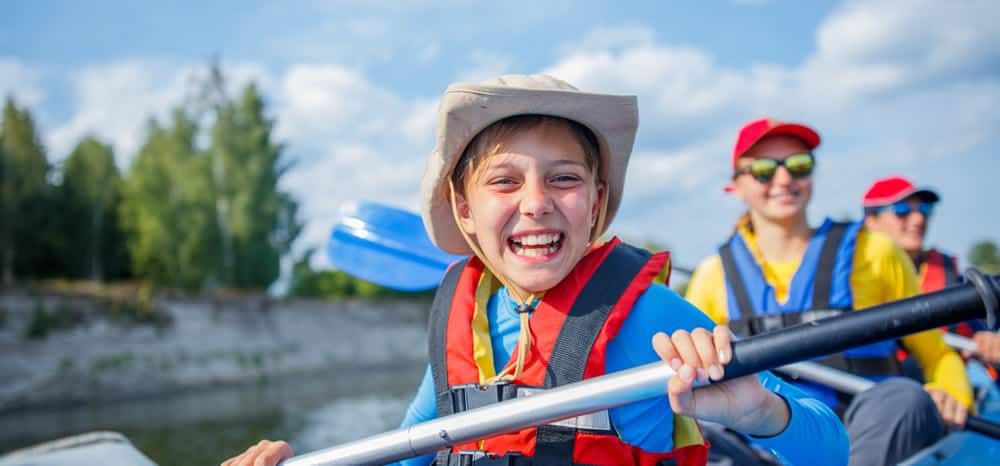
It is essential for kayakers to practice safety while out on the water, and this includes wearing a life jacket, being aware of weather conditions, and following all applicable laws. Now, let’s examine the items you should obtain to make your kayaking journey pleasurable.
Essential Gear for Kayaking
Having the correct equipment is essential for a successful kayaking experience. Whether you’re a beginner or an experienced paddler, there are certain items that should always be included in your kit. Here are five must-have items for every kayaker:
1. PADDLE
A paddle is an essential tool for kayakers, so selecting one that fits your size and body type and is made of lightweight materials such as aluminum or carbon fiber will enable you to move in the water with ease. When choosing a paddle, make sure it fits your height and body type. Look for one made from lightweight materials such as aluminum or carbon fiber so you can maneuver easily in the water without tiring quickly.
2. Life Jacket:
Safety first. No matter your paddling proficiency, don a life jacket before venturing out onto the water to ensure you remain afloat and abide by local regulations. Choose one that fits properly and has plenty of buoyancy to keep you afloat if needed. It’s also important to check local laws and regulations regarding life jackets before heading out on the water – some places may require them even if they aren’t mandatory everywhere else.
3. Spray Skirt:
If conditions get choppy while out on the lake or river, a spray skirt can help keep your boat dry by blocking incoming waves from entering inside your cockpit area (the space where you sit). For optimal protection from water splashes and waves, select a spray skirt that fits snugly around your boat as well as yourself.
4 Dry Bag:
A dry bag is an absolute must-have item when kayaking because it will keep all of your belongings safe from getting wet while still being accessible during paddling sessions – just remember not to store anything too valuable inside since these bags aren’t waterproof like their name implies. You can find dry bags in various sizes depending on how much storage space you need; many people opt for medium-sized ones which hold up to 20 liters worth of gear comfortably with room left over for snacks or other small items like sunscreen bottles etcetera…
Accidents happen, especially when spending time outdoors surrounded by nature’s elements. That is why having a repair kit handy is key; this includes items such as duct tape, extra bungee cords/straps, spare nuts & bolts plus patches/glue/sealant specifically designed for inflatable boats etcetera. With this handy toolkit at hand, fixing minor issues becomes easier than ever before allowing more time to be spent enjoying rather than repairing damaged equipment mid-trip.
Having the right gear is essential for a successful and safe kayaking experience. Knowing advanced kayaking strategies is key for improving one’s proficiency in the sport.
Advanced Kayaking Skills
Kayaking proficiency can propel your aquatic outing to an entirely new level. Whether you’re looking for more challenging whitewater, want to increase your speed or distance, or just want to be able to handle any situation that comes up while out on the water, there are plenty of advanced techniques and skills you can learn. For those seeking to take their kayaking experience further, mastering a variety of advanced techniques and skills is essential.
Bracing:
Bracing is an essential skill when it comes to maneuvering in rough waters. It involves using one paddle blade as a brace against the surface of the water in order to maintain balance and stability in choppy conditions. This technique also helps with turning quickly and efficiently when necessary.
Eddy Turns:
Eddy turns allow you to turn around without having to backpaddle or use forward strokes; they’re great for making quick adjustments when navigating tight spots like narrow channels or eddies (areas of slower moving water). To do this, enter an eddy from downstream by angling your boat into it at 45 degrees so that one side catches current first; then pivot 180 degrees so that both sides catch current equally and pull away from where you entered.
Draw Strokes:
Draw strokes involve pulling your paddle towards yourself through the water instead of pushing away from yourself as with normal paddling strokes. They provide powerful turning maneuvers which can help you navigate tight spaces such as rocks or shorelines where regular paddling may not be possible due to obstacles blocking your way forward.
Surfing Waves:
Surfing waves is all about riding them rather than fighting against them. With proper timing and positioning relative to incoming waves, experienced surfers can ride these waves like a pro surfer would ride an ocean wave – letting them carry their boat along until they reach calmer waters again.
SCULLING:
Sculling allows for fine control over directionality even in slow-moving currents, which is useful for making small corrections while maintaining course during long journeys downriver. To scull correctly requires precision coordination between hands, body position and paddle angle; once mastered it provides excellent control over movement through difficult areas such as rapids without needing excessive force input from paddlers themselves.
FAQs in Relation to Kayaking Guide for Beginners
What beginners need to know about kayaking?
Kayaking is a great way to explore the outdoors and get some exercise. Before you head out, make sure you have all the necessary safety gear including a life jacket, whistle, and appropriate clothing for cold or wet weather. It’s important to learn basic paddling techniques such as forward strokes and turning before heading out on your own. You should also familiarize yourself with local regulations regarding watercraft use in order to stay safe while kayaking. Before setting out, take heed to the ever-changing conditions of the water and be ready to adapt. With these tips in mind, kayaking can be an enjoyable experience.
1. Wear a Personal Flotation Device (PFD):
A PFD is the most important piece of safety equipment you can have while kayaking, so make sure to wear one at all times.
2. BE AWARE OF THE ENVIRONMENT
Be conscious of the environment you are in and any possible risks that could arise, such as powerful currents or inclement weather.
3. Follow Good Kayak Etiquette:
Respect other watercraft users by following established rules for navigation, avoiding crowded areas, and refraining from excessive noise pollution when on the water.
Is kayaking easy for beginners?
Kayaking is a great activity for beginners. With the right gear and guidance, kayaking can be enjoyed by all ages regardless of their level of experience. Kayakers of any aptitude can swiftly master primary paddling techniques, such as ahead stroke, rotating strokes, halting strokes and more with the correct guidance and practice. Kayaking also offers many opportunities to explore nature’s beauty while staying safe on the water. For those with experience in kayaking, the activity offers a highly gratifying adventure.
How do you kayak step by step?
1. Find a suitable body of water to kayak on and check the weather conditions before setting out.
2. Choose the kayak that best suits your requirements, like recreational or touring models, and make sure it is properly equipped with life jackets and flotation gear for safety.
3. Put on the necessary clothing items like quick-drying pants, shoes that can get wet, sun protection gear etc., based on the climate you are paddling in.
4. Learn basic paddle strokes – forward stroke (for propelling yourself), sweep stroke (to turn) & draw stroke (to move sideways). Practice them until they become second nature before heading out into deeper waters or more challenging terrain if applicable .
5. Finally launch your kayak from shoreline or dock by pushing off with one foot while holding onto the boat firmly with both hands; then sit down in the cockpit area once you are afloat and start paddling.
KAYAKING FOR BEGINNERS – SUMMARY
With this guide, we trust that you now have the knowledge and proficiency to start kayaking safely. With dedication and the right preparation, soon you’ll be an expert in kayaking. Safety is a must when kayaking – be aware of your environment prior to setting out. Don’t forget to bring along essential gear like a life jacket, first aid kit, whistle or distress signal device as well as any other items recommended by experienced paddlers. Good luck and happy paddling.
Come explore the great outdoors with SunWaterDirt.com and learn all you need to know about kayaking for beginners! Discover our helpful tips, tricks, and advice on how to get started today.

